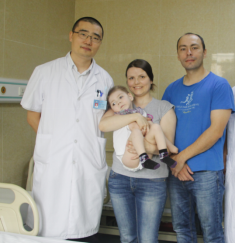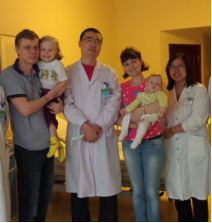
Sofiia, a 4 -year-7 -month-old girl from Kyrgyzstan, was born healthy with an Apgar score of 7 - 8 and normal physiological indicators.
At 2 months old, after vaccination, she had partial hand attacks and weight loss. On September 1, 2009, she suddenly fell ill, was hospitalized due to coma and spent a week in the resuscitation unit. After waking up, she lost skills like swallowing, sucking, and responsiveness. Diagnosed with cerebral palsy and epilepsy at 4 months, she took antiepileptic drugs (Keppra, Depakine, Potassium Bromide) and underwent rehabilitation. EEG showed no epilepsy in 2015, so she stopped the drugs. In 2016, nutritious supplements helped her gain weight, boost immunity, and improve appetite.
From September 2016, she received rehabilitation at Guangdong 999 Brain Hospital. With limited progress, she was admitted to the stem cells department in Beijing on May 18, 2017. During four treatments, she had 7 physical training and massage sessions.
Pre-Treatment Condition (Before the First Course of Treatment)
1. The patient lacks the fundamental physical capabilities. She is unable to sit upright independently, stand on her own two feet, take even a single step, or lift her head while lying supine. These limitations severely restrict her mobility and basic daily functions.
2. In terms of mental development, her intelligence, comprehensive capabilities, and cognitive skills have developed at a significantly retarded pace.
3. Her hearing function remains normal, yet her communication skills are severely impaired.
4. When it comes to hand movements, she can make grasping motions, but her hand-eye coordination and spatial orientation are poor. This results in inaccurate grasping and an inability to perform precise hand - related tasks.
5. The muscle strength in her lower limbs is notably weak. Her leg movements are chaotic and lack autonomy. Simple actions like kicking or moving her legs in a coordinated manner are challenging for her.
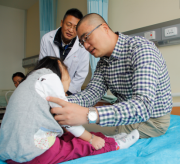
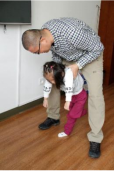
1. The patient's overall state has shown remarkable improvement. Her spirit is vibrant, appetite healthy, and she enjoys sound sleep.
2. Comprehension has notably enhanced. She now has a better grasp of family conversations. When the topic involves her, her reaction speed is much quicker than in the past, indicating improved cognitive processing and attentiveness.
3. Expressiveness has blossomed. Her facial expressions have become far more diverse. She is now more inclined to smile at strangers, reflecting increased confidence and social comfort.
4. Hand strength has significantly increased. The grasping force of her hands is much stronger than before, enabling her to hold objects more firmly.
5. Hand orientation, once a major issue, has improved substantially. With proper physical therapy (PT) training, she can now accurately and promptly grasp a piece of wood and place it into the correct hole, demonstrating enhanced hand-eye coordination and fine-motor control.
6. Physical endurance has grown. With the support of others, she can walk for a longer time than previously, signifying improved lower-limb strength and overall physical fitness.

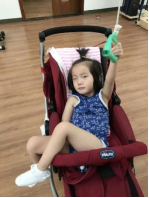
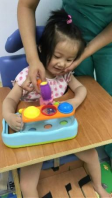
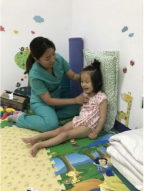
1. The patient's general condition has seen a remarkable upswing. Their spirit is visibly more buoyant, appetite has increased, and sleep quality has improved significantly compared to before the first course treatment.
2. Comprehension has taken another step forward. The patient can now understand complex ideas, conversations, and instructions more readily, which is a positive sign for their cognitive development and daily interactions.
3. Hand orientation has become notably more precise. The patient can now perform tasks that require fine-motor control, such as picking up small objects or using utensils, with greater accuracy and ease.
4. Social interactions have become more comfortable. When engaging with strangers, the patient is much more at ease, showing less shyness or discomfort.
5. While significant progress has been made, the strength in the neck and waist still needs more time and targeted exercises to improve.



The patient's current positive progress bodes well for the future. With a better state of spirit, appetite, and sleep, their overall physical and mental health will continue to strengthen. As the comprehension ability further develops, they'll be able to engage more deeply in learning and social communication.
In the long run, with unremitting efforts, the patient is likely to achieve a higher level of self- reliance and an improved quality of life.

